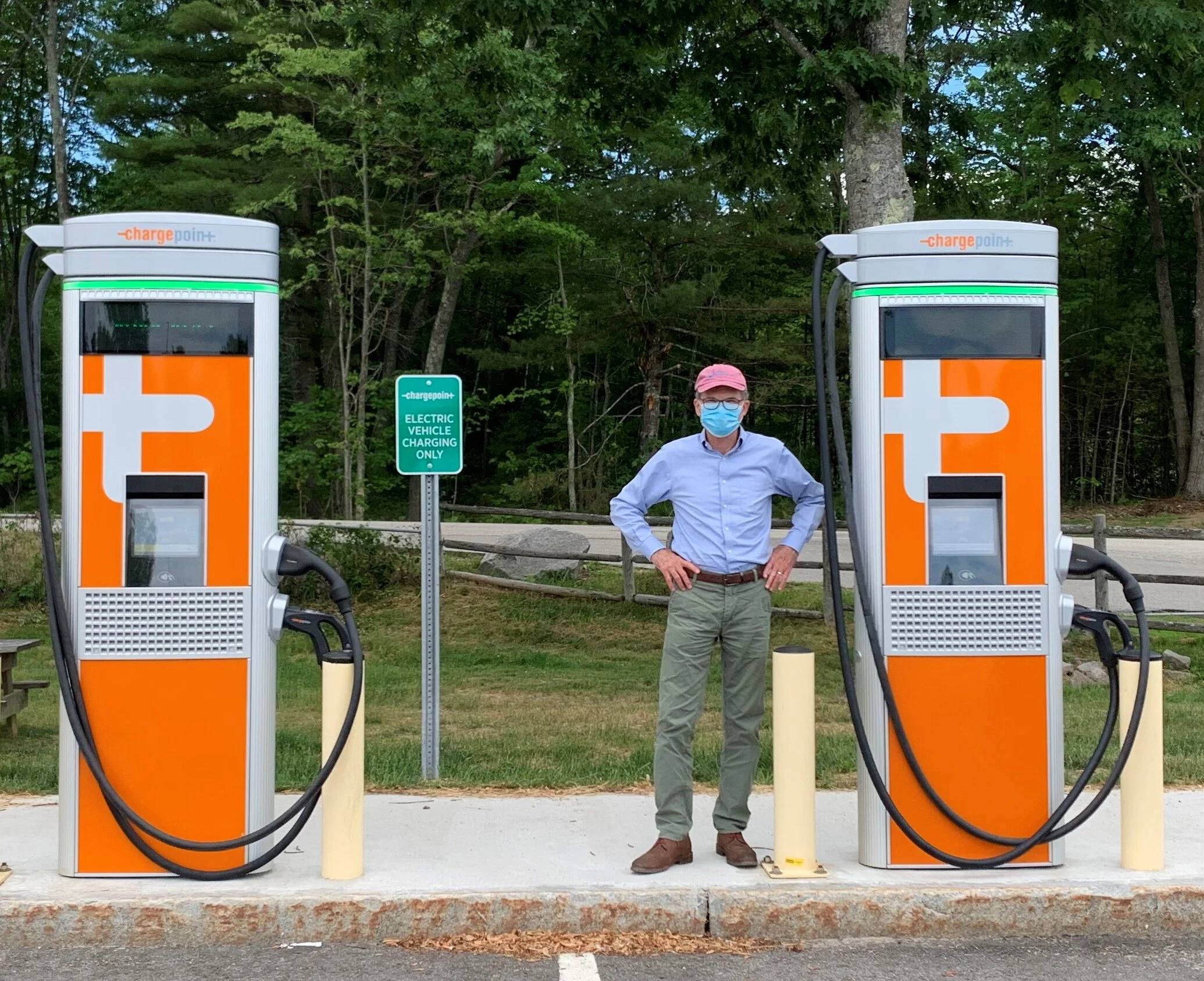Eleven Elements of Equitable Expansion of Electric Vehicles
Quick-charge stations, Maine Turnpike, southbound Kennebunk travel plaza
Transportation accounts for nearly one-third of greenhouse gas emissions in the U.S.
Expanding the use of electric vehicles (EVs) will help mitigate the effects of climate change by reducing reliance on fossil fuels for mobility. So what are the next steps?
Adoption of electric vehicles beyond the current market of high-income early adopters will increase significantly when:
1. EV manufacturers continue to increase vehicle range.
2. Governments, electric utilities and manufacturers reduce range anxiety by installing additional high-speed roadside charging stations and subsidizing at-home charging equipment.
3. Governments reduce initial EV purchase prices by providing financial incentives.
4. Manufacturers offset initial purchase prices by financing over time a large portion of an EV's lifetime fuel costs, i.e., the battery.
5. Manufacturers discount prices to build market share and meet reduced-emission targets.
6. Governments require the installation of EV charging ports in new and rehabbed residential, commercial and industrial construction.
7. Toll-road authorities, parking-lot operators and transportation departments offer EV motorists toll discounts, preferred parking and HOV lanes.
8. Climate-minded philanthropies fund EV incentives for low-income community members.
9. Manufacturers and dealers attract low-income consumers by creating a robust market for used EVs.
10. Governments offer conversion incentives for vehicle owners who retire gasoline vehicles for EVs.
11. Electricity providers offer off-peak rates for EV charging.
Implementing these 11 basic elements of equitable EV expansion will come at a price, of course: tax expenditures, reduced profits, infrastructure costs. Nonetheless, these expenditures will become less necessary as customer acceptance, market demand and purchasers' dollars replace "amp up" subsidies.
Even during the EV transition period, public- and private-sector stakeholders very likely will realize compensatory financial benefits: less investment in producing and delivering fossil fuels, lower environmental clean-up costs and reduced pollution-induced health-care spending.
Further benefit-cost analyses are likely to surface additional financial advantages to promoting EV usage.
Funding and financing equitable EV expansion is an important climate-mitigating policy challenge.
As a specialist in helping communities fund climate resilience, I've added equitable EV expansion as a focus of my current research and analysis.
